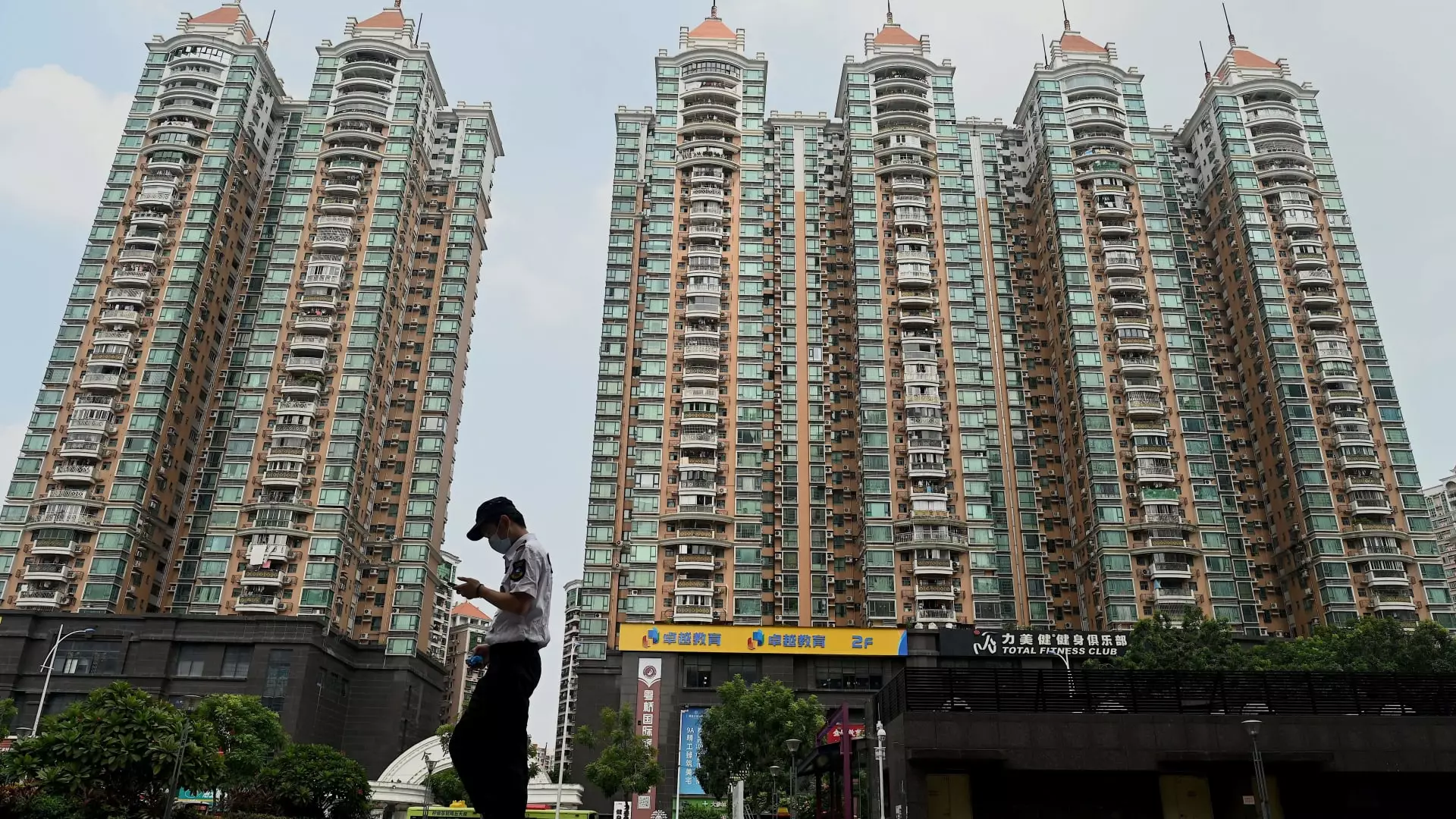The recent uptick in Chinese property developers’ shares illustrates the ongoing struggle the country faces with its real estate sector. Easing regulations initiated by major cities, along with a series of policy stimulus from the central bank, mark a deliberate attempt to rejuvenate a flagging market, which has significant ramifications for national economic stability. The situation reflects a nuanced interplay between government decisions, market psychology, and economic realities that demand careful dissection.
Government Initiatives: A Calibrated Approach
In a definitive move, the Guangzhou city government announced an immediate removal of prior restrictions on home purchases, effective immediately. This shift signifies a considerable loosening of previous rules which mandated migrant families pay taxes or social insurance for a minimum of six months before they could purchase a home. Single individuals, who were limited to a single apartment, now find themselves with the opportunity to invest in greater real estate ownership. Similarly, Shanghai’s decision to lessen the required tax-paying duration from three years to one year and to decrease down-payment ratios for first-time buyers from 25% to 15% mirrors efforts to stimulate housing market activity.
These regulatory adjustments represent not merely a reaction to current economic pressures but also a realization of the complex dynamics at play in China’s housing market. The central authorities are evidently striving to foster confidence among homebuyers while addressing the escalating financial burdens faced by households, a narrative deeply entrenched in the realities of modern China.
The market, as expected, responded enthusiastically to these announcements. The Hang Seng Mainland Properties Index posted an impressive 7% increase, compounded by a legacy of gains, which together brought renewed optimism to real estate stakeholders. Noteworthy increases in Hong Kong-listed real estate stocks, including Longfor Group Holdings and China Resources Land, further exemplify a collective sigh of relief among investors. The CSI 300 Index surged 8.5% on Monday, marking one of its strongest trading days in recent history.
This rally in property stocks, however, is accompanied by a caveat. Analysts suggest that the effects of such measures could be transient in scope. Allen Feng of the Rhodium Group provided a cautious perspective, indicating that while demand for properties in first-tier cities might surge, smaller cities could experience greatly muted effects due to high inventory levels and sluggish demand. Gary Ng of Natixis echoes this sentiment, emphasizing that stabilization might substitute for a definitive turnaround in the market outside primary urban centers.
The urgency behind these measures stems from a protracted economic downturn in the real estate sector, which has been exacerbated by Beijing’s stringent clampdown on high debt levels since 2020. Real estate used to be a linchpin of China’s economy, contributing over a quarter of its GDP. However, as government constraints escalated, the sector has witnessed a profound decline, leading to a broader economic malaise.
The backdrop of these recent reforms is critical to understanding their potential effectiveness. Previous government interventions, which attempted to stabilize the market and encourage buying, have largely seen limited success—raising questions about the sincerity and sustainability of these new measures. Many observers suggest that merely easing purchasing restrictions may not suffice to induce a significant rebound if the underlying issues, such as incomplete projects and consumer hesitance, remain unaddressed.
To genuinely foster a resurgence in the property market, experts like Erica Tay from Maybank Investment Banking Group advise a more comprehensive approach. Focus should extend beyond immediate purchasing measures to include initiatives aimed at completing stalled developments that could restore consumer confidence. Currently, a dismal 4% of floor space under construction in 2023 has been completed, highlighting a significant gap that prevents genuine market recovery.
In summation, the interplay of government policy, market forces, and economic conditions presents a complex challenge for China as it navigates its path towards revitalizing the real estate sector. The recent easing of restrictions marks a step forward but calls for a coordinated effort to tackle underlying economic vulnerabilities for a sustainable recovery. Without addressing the root causes of the crisis, these measures may prove to be short-lived, merely papering over deeper systemic issues. As China continues to grapple with the real estate dilemma, careful monitoring and a commitment to holistic solutions will be paramount.

